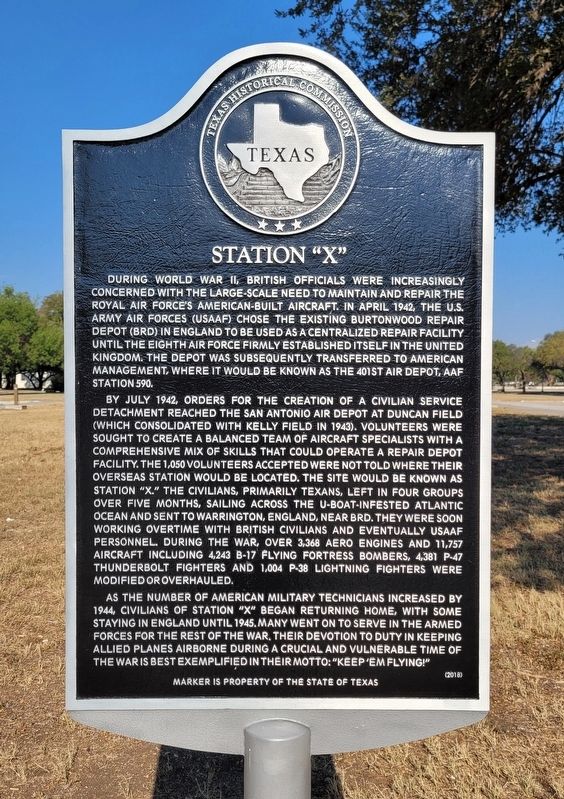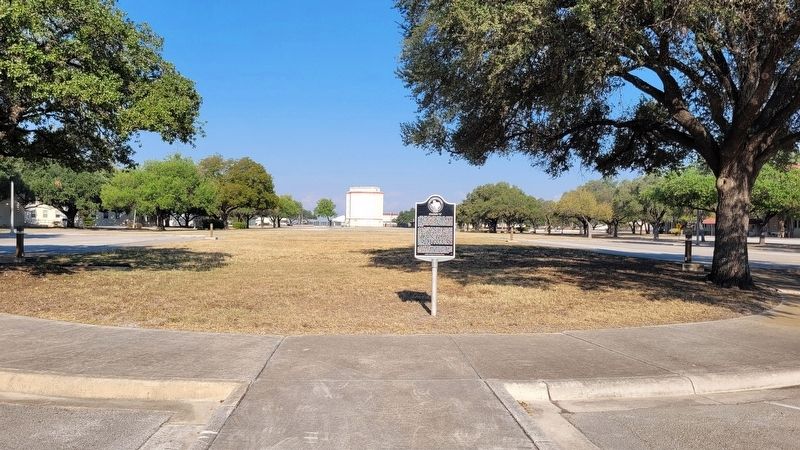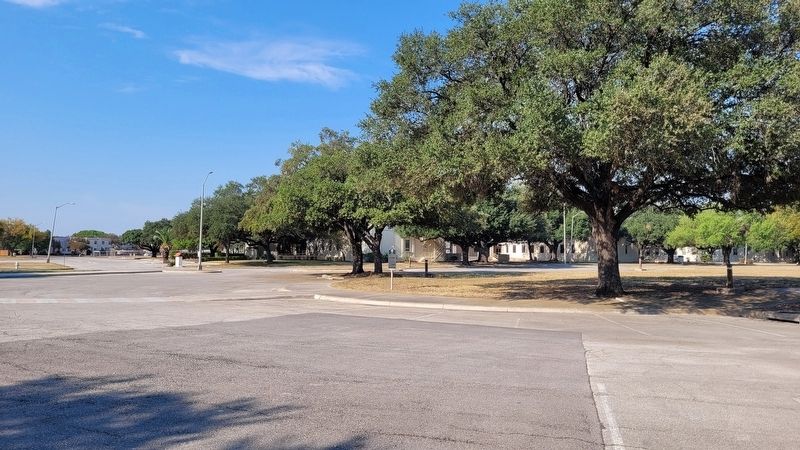Edgewood in San Antonio in Bexar County, Texas — The American South (West South Central)
Station "X"
By July 1942, orders for the creation of a civilian service detachment reached the San Antonio Air Depot at Duncan Field (which consolidated with Kelly Field in 1943). Volunteers were sought to create a balanced team of aircraft specialists with a comprehensive mix of skills that could operate a repair depot facility. The 1,050 volunteers accepted were not told where their overseas station would be located. The site would be known as Station "X." The civilians, primarily Texans, left in four groups over five months, sailing across the U-Boat-infested Atlantic Ocean and sent to Warrington, England, near BRD. They were soon working overtime with British civilians and eventually USAAF personnel. During the war, over 3,368 aero engines and 11,757 aircraft including 4,243 B-17 Flying Fortress bombers, 4,381 P-47 Thunderbolt fighters and 1,004 P-38 Lightning fighters were modified or overhauled.
As the number of American military technicians increased by 1944, civilians of Station "X" began returning home, with some staying in England until 1945. Many went on to serve in the Armed Forces for the rest of the war, their devotion to duty in keeping Allied planes airborne during a crucial and vulnerable time of the war is best exemplified in their motto: "Keep 'em Flying!"
Erected 2018 by Texas Historical Commission. (Marker Number 20030.)
Topics. This historical marker is listed in these topic lists: Air & Space • War, World II. A significant historical month for this entry is April 1942.
Location. 29° 22.931′ N, 98° 34.186′ W. Marker is in San Antonio, Texas, in Bexar County. It is in Edgewood. Marker is at the intersection of Mabry Drive and Moorman Drive, on the left when traveling west on Mabry Drive. The marker is located on the opposite side of the San Antonio Museum of Science and Technology (SAMSAT) building. Touch for map. Marker is at or near this postal address: 102 Marby Drive, San Antonio TX 78226, United States of America. Touch for directions.
Other nearby markers. At least 8 other markers are within walking distance of this marker. Spaatz Hall (about 300 feet away, measured in a direct line); Kearby Hall (about 500 feet away); F-15A "Eagle" (approx. 0.3 miles away); "Kelly No. 2" Flight Line (approx. 0.3 miles away); F-106B (approx. 0.4 miles away); FB-111A (approx. half a mile away); B-58 Hustler (approx. 0.6 miles away); Dedicated to Brigadier General Harold E. (Hal) Confer (approx. 0.6 miles away). Touch for a list and map of all markers in San Antonio.
Also see . . .
1. Eighth Air Force. Wikipedia
Established on 22 February 1944 by the redesignation of VIII Bomber Command at RAF Daws Hill in High Wycombe, England, the Eighth Army Air Force (8 AAF) was a United States Army Air Forces combat air force in the European Theater of World War II (1939/41–1945), engaging in operations primarily in the Northern Europe area of responsibility; carrying out strategic bombing of enemy targets in France, the Low Countries, and Germany; and engaging in air-to-air fighter combat against enemy aircraft until the German capitulation in May 1945. It was the largest of the deployed combat Army Air Forces in numbers of personnel, aircraft, and equipment.(Submitted on October 15, 2022, by James Hulse of Medina, Texas.)
2. Burtonwood Repair Depot (known as BRD site). Historic Aviation Military
BRD site is basically a factory for aircraft maintenance and repair. The depot workshops included facilities for the modification and repair of air frames, overhauling and testing of engines, variable pitch props and woodworking and metal work.(Submitted on October 15, 2022, by James Hulse of Medina, Texas.)
Credits. This page was last revised on February 2, 2023. It was originally submitted on October 14, 2022, by James Hulse of Medina, Texas. This page has been viewed 239 times since then and 41 times this year. Photos: 1, 2, 3. submitted on October 15, 2022, by James Hulse of Medina, Texas.


